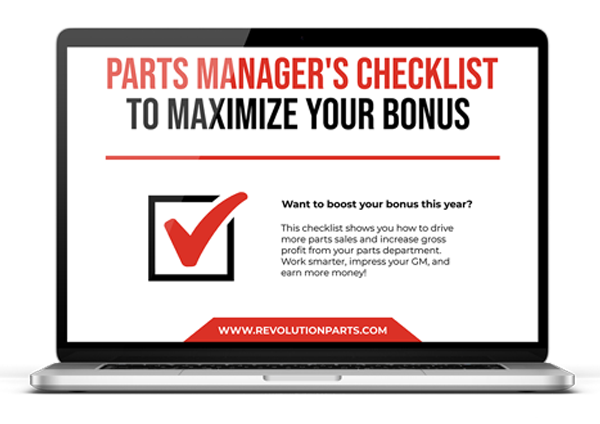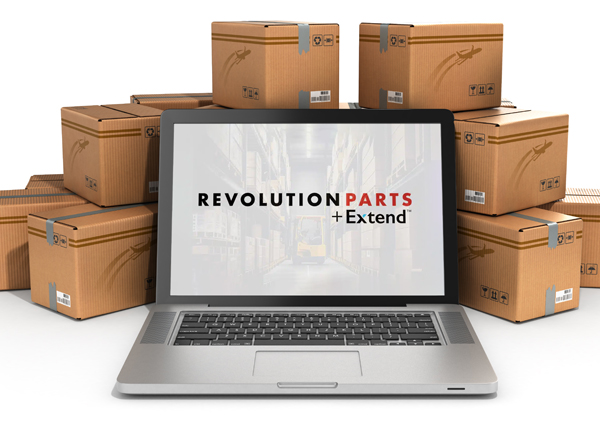If you are a parts manager who is new to paid advertising, you’ll have a hard time assessing the success or struggles of your next campaign. Without context, conversion rate, clickthrough rate, returns, and other factors are just numbers. The key to tracking and measuring your advertising success is understanding the most important metrics that indicate a successful advertising campaign for auto parts sales.
Key Performance Indicators (KPIs) for Search Engine Marketing in the Auto Parts Industry
Return on Investment (ROI)
Return On Ad Spend (ROAS)
Dealers selling through RevolutionParts and leveraging the RP Marketing Services see an average of 8.75X return on ad spend.
Cost-Per-Click (CPC)
CPC is what Google charges you for each lead when someone clicks on your ad. If you’re targeting keywords with less competition and lower bids, you can expect to have a low cost-per-click, while expensive keywords will increase your CPC. This metric demonstrates how cost-efficient your keyword selection is.
Click-Through Rate (CTR)
The click-through rate compares impressions (the number of times that people see your ad) to the number of people who click on it. A high CTR indicates that your campaign is targeting relevant keywords and that your ads are reaching interested parties.
Conversion Rate
Cost-Per-Conversion
Setting Up Conversion Tracking
It’s essential to set up conversion tracking to accurately track metrics like conversion rate, ROAS, ROI, and cost per conversion. This involves setting your ads and analytics to record when users complete actions, like making a purchase or signing up for a newsletter, after clicking on your ads. This lets you see how many clicks lead to actual results.
Simple Steps to Set Up Conversion Tracking in Google Ads
Step 1: Access Conversion Tracking:
- Log in to your Google Ads account and click “Tools and Settings.”
- Click on “Conversions” under “Measurements” in the left-hand menu.
- Click the blue plus sign (+) to “Create Conversion.”
- Choose “Website” as the place you want to track conversions.
- Follow the prompts to define what kind of action you want to track (like a purchase or sign-up).
- Name your conversion (like “Product Purchase” or “Newsletter Sign-Up”).
- If your conversion (like a sale) has a monetary value, you can enter that.
- Choose how many conversions to count per ad interaction.
- Google will give you a piece of code called a “tag.”
- You need to add this code to your website. Specifically, it should appear on the “thank you” page that appears after someone completes the action you’re tracking (like buying something or signing up).
Common Paid Advertising Problems And How to Diagnose Them
When your returns are positive, your clickthrough rates are high, and your cost per click is low, you know your campaign is going well. However, the hard part is developing that successful campaign. But while your KPIs can measure the success of a campaign that’s going well, they can also illustrate the problems holding you back. A few common paid ad challenges and how KPIs illuminate them include:
Mastering Paid Advertising Success Metrics
In conclusion, understanding and effectively using key performance indicators (KPIs) is crucial for parts managers aiming to track and enhance their paid advertising efforts. By focusing on metrics like ROI, ROAS, CPC, CTR, and conversion rates, you can gauge not only the efficiency but also the profitability of your campaigns.
Remember, each metric offers insights that can help you fine-tune your strategies—from choosing the right keywords to optimizing your landing pages. Successful paid advertising isn’t just about launching campaigns; it’s about continually measuring, understanding, and improving your ads to ensure they deliver the best possible returns for your parts business. Stay informed and proactive with your metrics, and watch your digital marketing efforts thrive.
Did you know that when you sign up for RevolutionParts, you can become eligible to add on marketing services? The RevoutionParts Marketing Agency is a team of digital marketers specializing in parts marketing. This means they know all the strategies and tricks to ensure your parts web store performs at its best.



